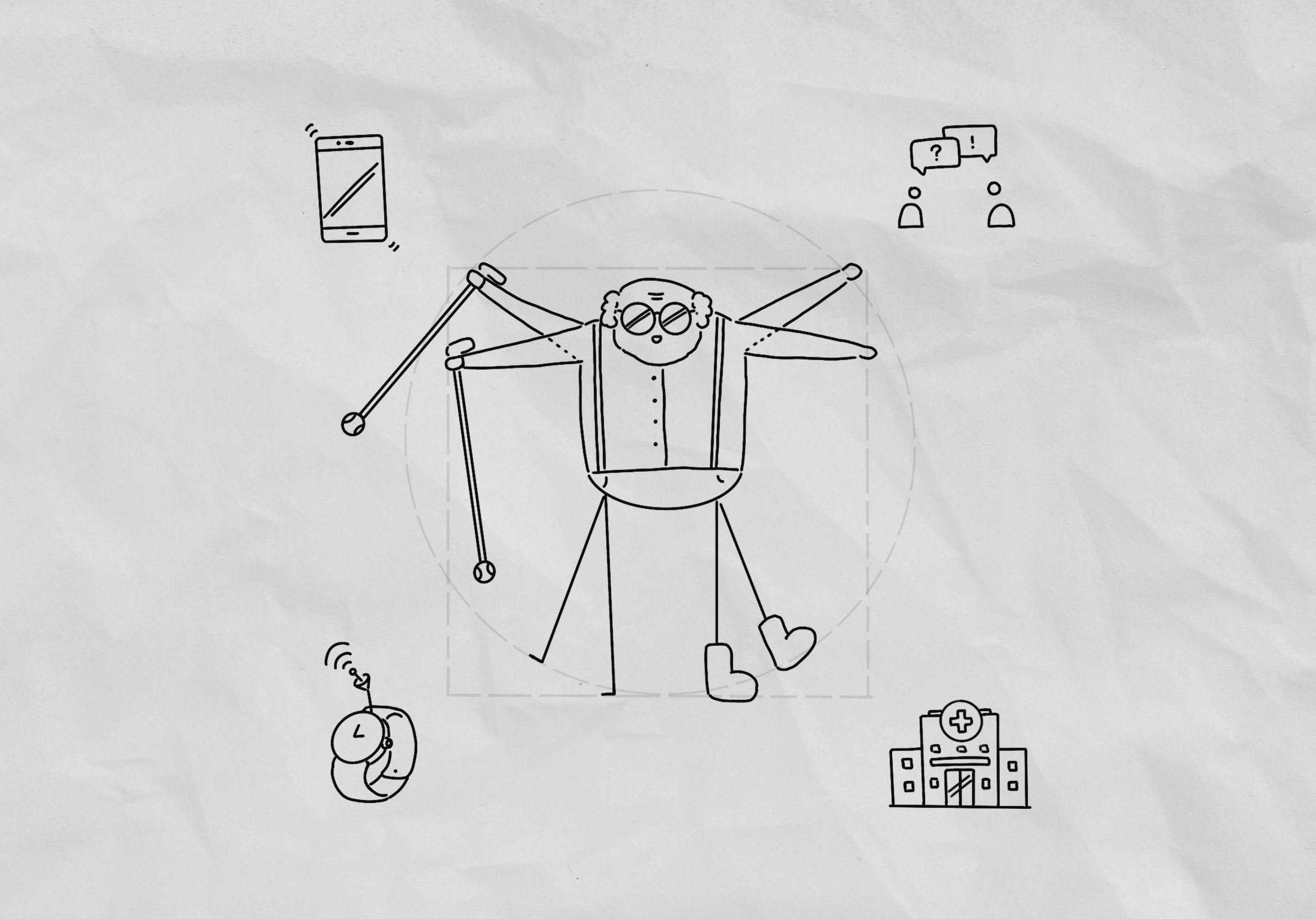Making a Good Patient: The hidden tactics that unlock functional health and care.
Author: Pedro Rocha, UPORTO
Introduction
For 15 years, Roberto has been the primary carer of his wife Maria who has Alzheimer’s disease. In this task, he has been supported by their daughters, the National Health System (from primary care through medical specialists) and the National Association of Alzheimer disease. Additionally, he paid for private therapists for cognitive stimulation for Maria.
Maria is now in a care home, but Roberto continues to support her through different care activities: regular visits (reduced to one per week and socially-distanced because of Covid-19), alone or with family and friends. He also brings her gifts and daily necessities while helping her to keep her medical appointments. Maria’s care is further bolstered by regular communication between all members of her social network, and, through this contact, Roberto has become familiar with communications technology to maintain contact with and coordinate Maria’s care network, using WhatsApp, Skype and Facebook. He also shares text, images, videos, and audio in this fashion.
When Carers Need Care
At 65, though, Roberto himself has become frailer. He is now (largely successfully) managing various age-related diseases and, after he injured his left leg in a recent fall, there was a genuine concern, in both his medical team and across his network, that Roberto himself might become infirm. Thankfully, he has managed his recovery well, following medical advice to walk for at least one hour a day, eat a balanced diet and get his sleep. In short, Roberto has been a good patient. He continues to live alone, supported by some social and health networks and assisted by a cleaning lady who visits once a week. He continues to meet with friends every week, sharing traditional Portuguese food and even taking a few drinks. He has even accepted a smart bracelet for monitoring his sleep patterns and physical activity, information that is shared with his GP and other health professionals.
What Makes A Good Patient?
As a retired worker from the private industry, Roberto derives his income from a National Social Security pensions system based on 43 years of social security contributions. This system works on a pay-as-go model for health care and ensures free and universal access to the National Health System, mediated by a local GP. As importantly, Roberto also has an ‘old friend’, a GP colleague from his working days, as well as a doctor in the family, his nephew who is an ophthalmologist, both of whom provide him with healthcare options and news about useful innovations. This relationship with medical experts is also a great advantage in navigating the healthcare system and gives Roberto confidence to discuss aspects of his treatment with his doctors. He often calls them for advice before contacting health providers from the National Health System.
His social network and his experience of being a carer eased his transition towards digital communication and allowed him to adapt well to the enforced social distancing due to the Covid pandemic. He now manages most of his own health needs through phone and e-mail, while using an online platform to schedule medical appointments, receive prescriptions and access clinic data, alongside now using these same tools to help manage Maria’s care.
Conclusion
This case shows that receiving and managing health services and using ICT devices and digital solutions is less a case of age than familiarity with certain contexts. For example, Roberto’s ‘adoption’ of technology is not solely within the frame of technology or even design per se. Instead, Roberto’s long history of caring for Maria led him to learn digital technologies to coordinate his family’s contribution and to engage with the medical system. A certain level of education certainly helped in being comfortable in such contexts, but having some of his ‘informal’ social network in the ‘formal’ medical system also allows him to tap into both medical expertise and confidently translate registers to work out informed questions and partner with medical teams. Finally, from his friend and nephew, he also gets an insider’s view of how the system works as a system from those who deliver care within it daily. Hence, Roberto reminds us that a successful care experience, as well as confidence with the use of various kinds of technologies, has a myriad of influences. Care systems would do well in being aware of and responding to the strengths patients bring with them.
Category

Illustration Credit: John Foley

